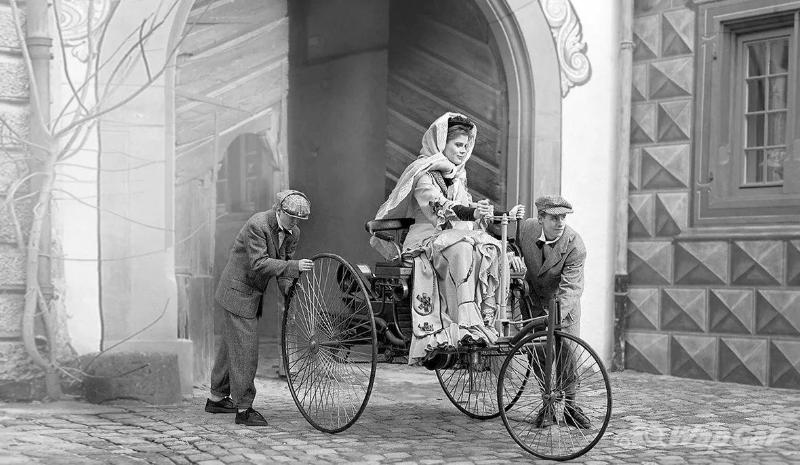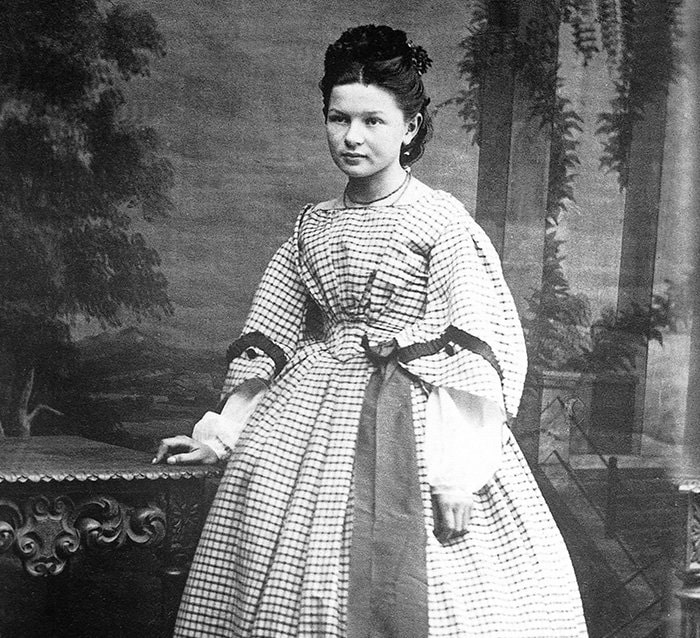A Woman Co-Invented The Car But Patent Laws Wouldn't Recognise Her Work
She was also the first person to drive the car over a long distance, during the space of which the car broke down many times, and each time she did roadside repairs on her own — inventing brake lining.
There's a reason why history only recognises Carl Benz of the Benz & Co company as the inventor of the modern automobile
Berlin's Imperial Patent Office granted Carl Benz of the Benz & Co company in Mannheim as the owner of patent number DRP 37435, which regarded the Benz Patent Motorwagen 1886 as the world's first modern automobile – with an internal combustion and electric ignition.
The only reason Carl Benz was solely credited for the invention of the car was simply that German patent laws at that time didn't allow women to register any patents.
In truth, the invention of the automobile was the work of both Carl Benz and his wife Bertha Benz. The Benz & Co company was started with Bertha's family money.
In modern terms, Bertha was the venture capitalist who funded the Benz startup.
Right from the beginning, Bertha worked with her husband Carl to design the 1886 Benz Patent Motorwagen's rudimentary 2.0L single-cylinder 0.75 horsepower four-stroke engine.
A replica of the 1886 Benz Patent Motorwagen at the Mercedes-Benz Museum in Stuttgart.
Image via WapCarHistorical documents suggest that Bertha might actually be more familiar with the car than her husband, as proven by the improvements she made to the car's design during its maiden test drive
The original male-centric narrative of Carl Benz as the inventor of the automobile, written by men, of course, is now being revised to post-humously grant Bertha the credit due to her.
Carl was a brilliant engineer but his skills were limited only to the workshop.
Despite lacking in education, Bertha instinctively understood the need for field trials before improvements can be made, and repeating the same work in the same workshop won't bring any results.
She was also the better business person, having funded Benz & Co.
After being ridiculed by conservative folks at that time for building a "devil's carriage" as the prevalent belief at the time was that only a devil or black magic could move a carriage without a horse, Carl lacked the confidence to show his car to the public.
Fed up with Carl's fear to push further, Bertha decided to conduct the world's first test drive on her own, and without her husband's knowledge, from Mannheim to Pforzheim.
Since women back then were not allowed to travel unaccompanied by men, she woke her sons, Richard and Eugen, one early morning of August 1888, and went on a 180km return trip to her mother's home.
The car broke down many times, and each time she did roadside repairs on her own, and along the way, had upgrades fitted to it
She had a cobbler install leather linings on her car's wooden brakes, thus inventing the world's first brake pad.
The rudimentary ignition system also gave problems, which she traced to poor insulating materials used on the ignition wire, which she fixed with her garter.
The engine also stalled often, which she traced to bad fuel lines, which she unclogged with her hairpin. The engine often also overheated as the water in the cooling system evaporated too quickly.
The pharmacy in Wiesloch where she stopped by to buy 10 litres of 'Ligroin' is the world's first 'petrol station'.
All these actions proved that she was indeed the co-inventor of the car
After a 12-hour journey, Bertha sent a telegram to tell Carl that his invention worked well enough and that it just needed a few more upgrades. She returned to Mannheim with the car a few days later, taking a shorter route.
With results from her test drive, Carl installed a two-speed transmission and better brakes for the car. A total of 25 units of the 1886 Benz Patent Motorwagen were built.
The route that Bertha took is now recognised in her honour as the Bertha Benz Memorial Route.
In 2013, Mercedes-Benz sent a self-driving prototype car named 'Bertha' over the same route to show how far its technology had come. In 2018, the company followed with an ad, crediting Bertha as not just someone who drove a car, but that she drove an industry.



